Can you leave your Patio Furniture outside in the Winter?
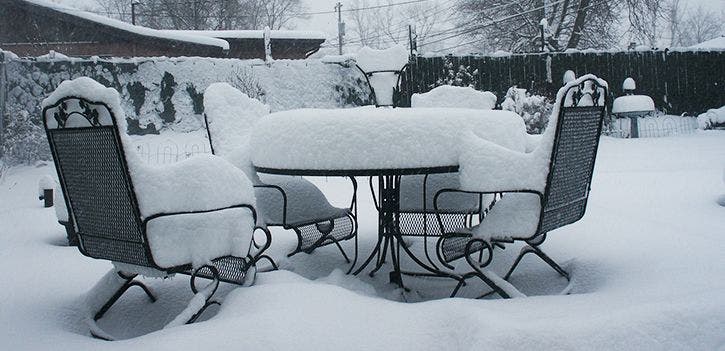
The patio is our favorite place. It is an outdoor space that we use for rest, dining and generally everything we like to do in our yard, when the weather is nice. It is a real oasis for everyone who lives in the cities so you should advantage of living in the house instead of the flat. It can be a deck, porch or some other different type. In any case, in order to complete the space and have a place to sit, rest and enjoy, we have to buy outdoor furniture. The choice of outdoor furniture is very large and when we buy it, we will feel like when we furnish the interior of our house. The only difference is that this is furniture that is intended for outdoor conditions, so it is much more durable. Special materials, paints and coatings were used to make it suitable for our yard.
That is why people make mistakes and think that this type of furniture is indestructible. If you are wondering if this is the case, continue reading the text and find out the answer to the question can you leave your patio furniture outside in the winter.
Can you leave your patio furniture outside in the winter?
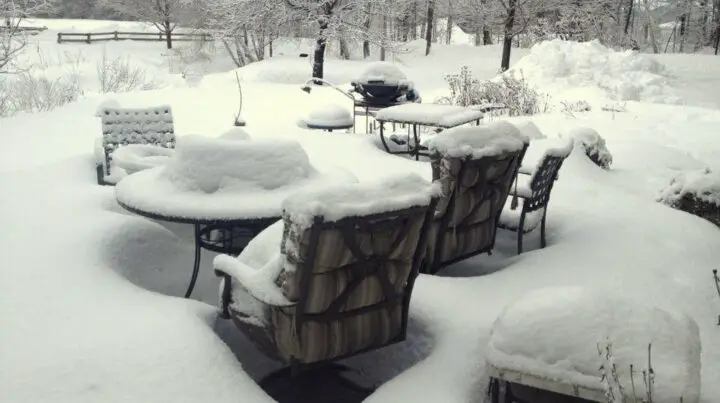
The answer to this question is mostly no. Although much more resistant, this furniture will definitely decay if you leave it outside all winter. Although it is designed to withstand the weather, if we leave it outside during the winter, you will find ruined things in the spring, unless you are lucky enough to live in one of the few places where summer always lasts. So you need to winterize it in the right way and know how different furniture materials hold up in the winter, because some may even be able to survive whole winter outside. Don’t look further, because we will give you answers and advice.
Winterizing
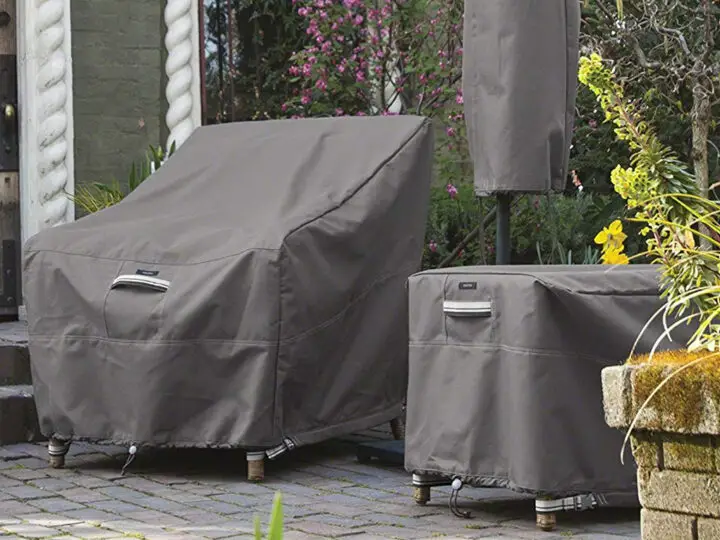
Winterizing is a process you must take to protect everything you cannot move from a patio. This is not one thing you have to do, but several different tasks for each type of furniture. For example, it would be good to coat the deck with preservatives that contain wax and sealants. So you will be sure that in the spring you will be greeted by a deck that looks the same as the first day. You should do the same with all the furniture for which you do not have space in the garage or basement. And after that you need to cover everything with nylon or something similar. Below we will explain to you how sensitive each material is, and you should remember that when you buy things. Experts from remarkablefurniture told us to advise you to think carefully and choose a material and maintenance level that really works for you. In other words, if you do not want to put too much time and effort into all this, do not choose materials that are very prone to decaying and that need constant maintenance, otherwise, this will become tedious instead of enjoyable.
How do different materials withstand winter?
Of course, for example, aluminum and wood have completely different characteristics, so it is normal that the rate of decay in winter conditions is not the same. We will list for you some of the most used materials for outdoor furniture, so that you know what you absolutely have to remove from the patio before the cold days start.
Wood
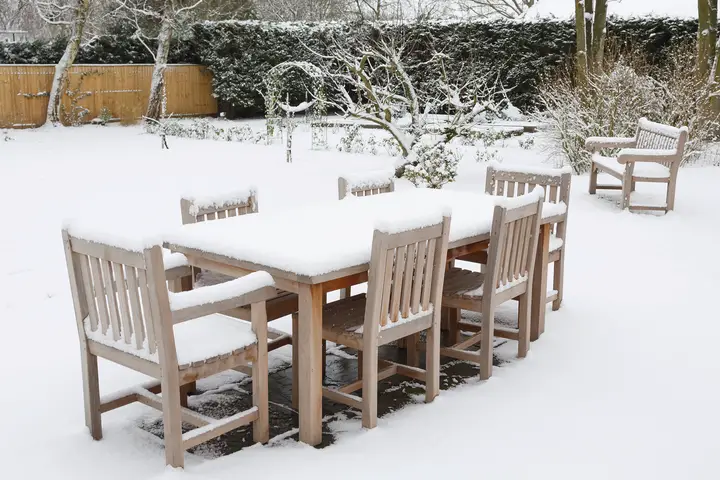
Different types of wood are used, and of course each type of wood has different characteristics. Certainly the most resistant furniture is made of teak, because it is very hard and durable, so it is also used for shipbuilding. While you can leave what is made of teak outside during the winter, that doesn’t mean the teak doesn’t need pre-winter maintenance either. After winter, coat it with a combination of water and vinegar to remove stains and let it dry. For all wood furniture, also use sealants to prevent moisture from penetrating and destroying the wood. When you have done everything necessary, use covers to further protect. But you should buy breathable covers, otherwise you risk mildew.
Wicker
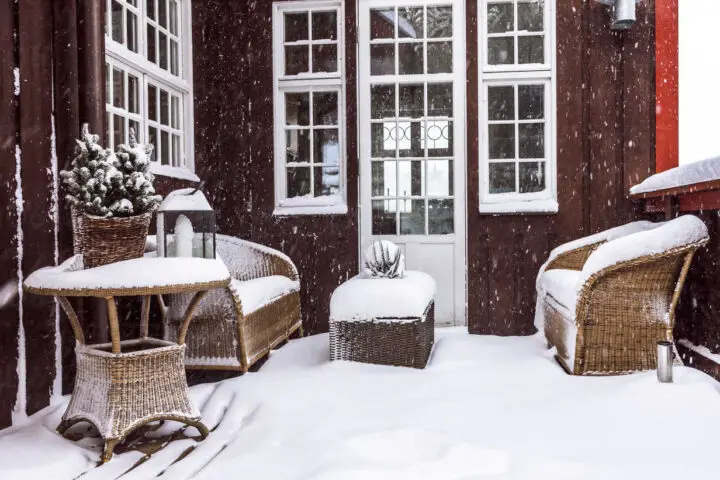
Wicker furniture looks beautiful and is therefore a very common choice. When shopping, check for UV and weather-resistant coatings otherwise you risk decaying very quickly due to wicker’s characteristics. When it comes to winter conditions, anything made of wicker is certainly not something you should leave outside. Water and snow will get inside and thus permanently cause damage and cracks. So take it to the garage or you can even move it into house and use it during the winter. The only time it’s safe to leave it out during the winter is if it’s actually a resin wicker, not a real wicker. It is an artificial material that looks the same and is very resistant.
Aluminum
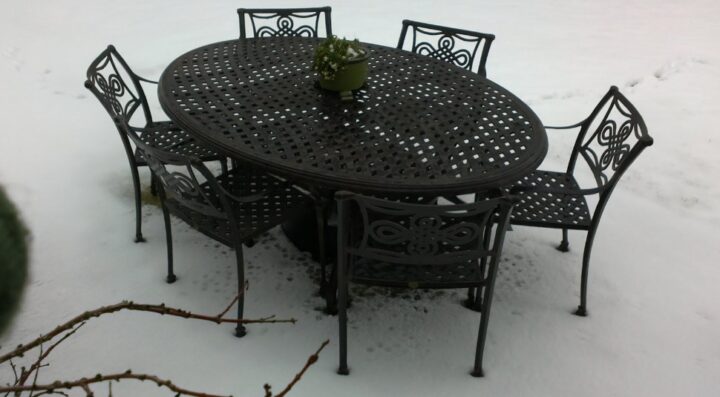
Aluminum is a very resistant material to which weather factors have almost no effect. Snow, rain and cold will not do any damage, so you don’t have to worry, it is rustproof. Aluminum is ideal for all those who want to have as little work as possible before winter. The only thing that can be damaged is the frames, so protect it. And in case of strong wind, fix everything, because it is lightweight and can fly away and do damage.
Fabric
These include pillows, cushions and hammocks. Of all things, this is the most sensitive to weather conditions, so if you do not bring them into a dry place during the winter, you can throw them away immediately, because in the spring you will find things destroyed so much you won’t even be able to recognize it. You can wash everything during the fall and let it dry well and have everything ready for spring. The most important thing is not to pack until it is completely dry.
Conclusion:
These are the most common materials used. If you choose steel or iron, you must bring them inside during the winter, otherwise rust will appear. Stone is very rarely used, and if you have stone furniture, small cracks are the biggest danger, because the water will enter there and when it freezes, it will cause damage. Since the stone is too heavy to move, use sealants and cover it.
